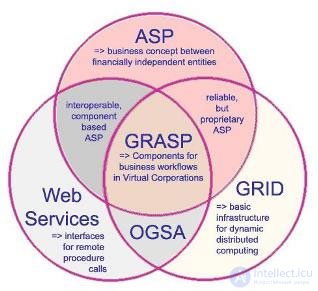Lecture
Object-oriented programming (OOP) - I would say that it is a set of basic concepts (abstraction, encapsulation, inheritance, polymorphism), constructs (classes, methods) and principles. OOP is a model, a generalized model of a part of a subject or object domain for programming the environment. This programming is a generalized model, an expression of the object model in terms of a programming language. And this model, like any other model, is consciously limited.
So, a huge part of the PLO is a set of principles. And here everything seems to be clear. But there are many principles. And different authors single out as basic sometimes similar, and sometimes different, principles, and surprisingly, all are correct.
Modeling is not difficult. The only problem is that we are still dealing with a model. And when objects (entities) are already created, then programming and design come into play. Objects must interact and the model must be flexible and simple. Here principles help us.
GRASP is a set of principles according to an expert such as Craig Larman, who wrote about them in his book - Applying UML and Patterns.
VqLdij5 iE =
By the way, the book is translated into Russian. The book as well as the book GoF (Gang of four) has taken its place in history and, accordingly, the principles of GRASP, to which a small part of the book is dedicated too.
Perhaps they are not as popular as, say, the principles of SOLID, most likely, it seems to me, because they are more generalized. These principles are more abstract than GoF or SOLID templates.
So the principles of GRASP, or rather, not the principles, but the templates in the original. General Responsibility Assignment Software Patterns - this can be translated as - responsibility sharing patterns. The bottom line is that these are not strict patterns like those of GoF, it’s rather the meaning with which we endow objects. So the principles of distribution of shared responsibility fits more than patterns. Therefore, the title of the article is not GRASP templates, as it would be ideologically correct, but still the principles of GRASP.
GRASP identifies the following template principles:
Information Expert
Creator
Controller (Controller)
Low Coupling
High Cohesion (high cohesion)
Pure Fabrication (Pure Fiction or Pure Synthesis)
Indirection
Protected Variations (Implementation hiding or protected changes)
Polymorphism (Polymorphism)
Now let's look at each of them in order.
Information expert
An information expert or just an expert is rather a responsibility. An expert can be any class. It's not even about design, but about awareness. Why do we need an information expert? Then, if an object owns all the necessary information for some operation or functionality, then it means that this object will either perform or delegate the execution of this operation.
 |
| Key concepts underpinning the GRASP project vision. |
So consider an example. There is a certain sales system. And there is a class Sale (sale). We need to calculate the total amount of sales. Then who will count the total amount of sales? Of course, the class is Sales, because it is he who has all the information necessary for this.
Creator
Creator or Creator - the essence of the responsibility of such an object is that it creates other objects. Immediately suggests an analogy with the factories. The way it is. Factories also have the responsibility - the Creator.
But there are a number of moments that should be fulfilled when we endow the object with the responsibility of the creator:
1. The creator contains or aggregates the created objects.
2. Creator uses created objects
3. The creator knows how to initialize the object being created.
4. The creator writes the created objects (I didn’t really understand this thing until the end)
Controller
Already heard somewhere, is not it? A controller or controller is an interlayer object between the UI logic and the object (business) logic of the application. We create a controller so that all calls from the UI are redirected to him and, accordingly, all UI data also receives through him.
Reminds MVC, MVP? And there is. This is essentially a MVP Presenter and a MVC controller. There is a difference between MVC and MVP, but this concerns only the directions of calls, well, this topic is of course a different conversation.
So, the controller answers the following question: “How should the UI interact with the domain logic of the application?” Or simply “How to interact with the system?”. This is what looks like a facade. The facade also provides easy access to the whole subsystem of objects. So here, the controller for UI is a kind of facade that provides access to the whole business logic subsystem.
Low coupling
Also known thing. Low Coupling or Low Connectivity. If the objects in the application are strongly related, then any change leads to changes in all related objects. And this is inconvenient and generates bugs. That's why they write everywhere that it is necessary that the code be loosely coupled and dependent on abstractions.
For example, if our class Sale implements the ISale interface and other objects depend precisely on
Comments
To leave a comment
Object oriented programming
Terms: Object oriented programming